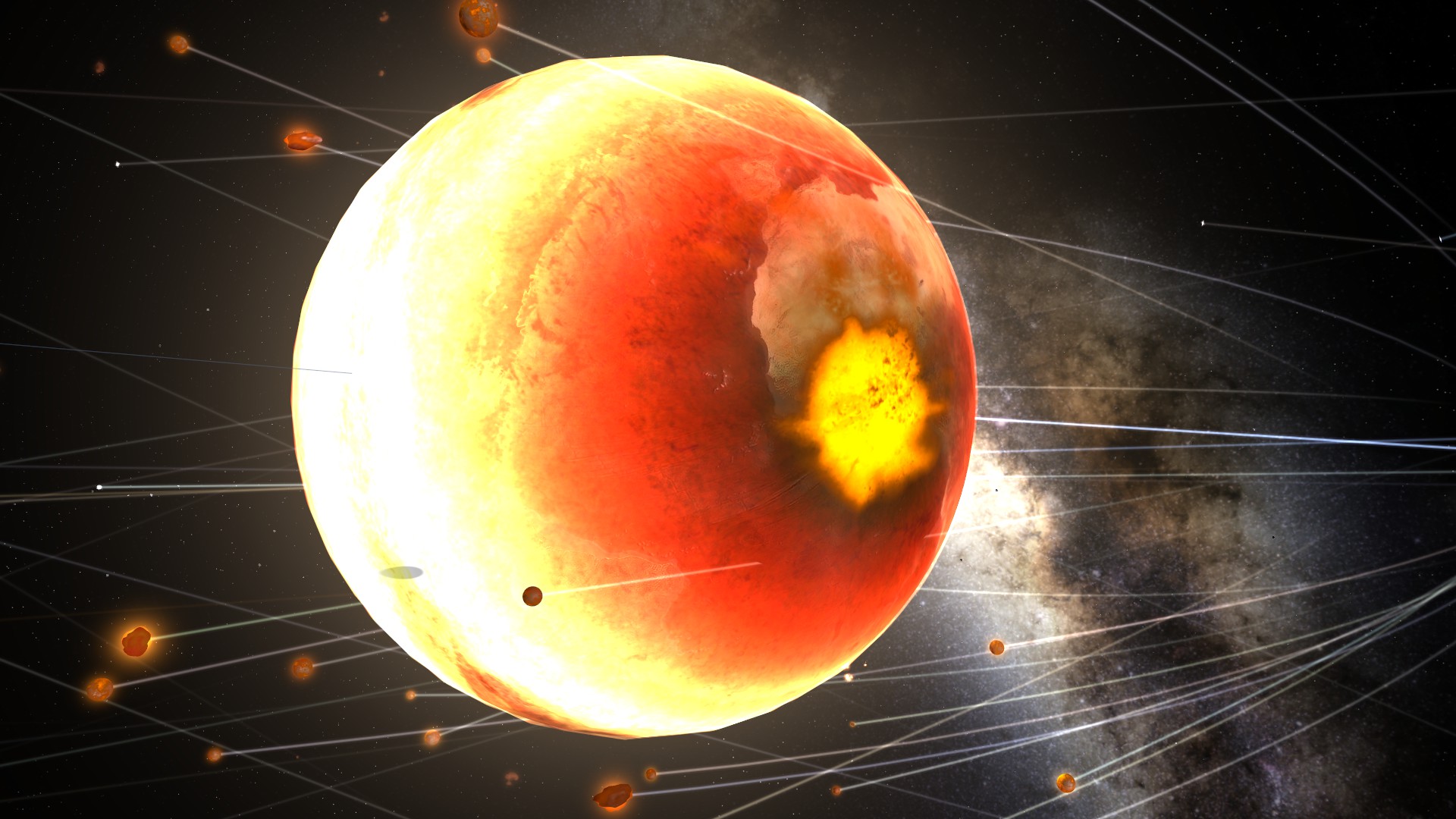

This graph shows the calculated density of the materials of Earth based on their depth. Designing the properties, data views, and tools for you to construct atmospheres, build and terraform planets, and track these materials is a crucial part of our development process.Simulation of an atmosphere’s heating (the greenhouse effect), color, and opacity, including Venus-like atmospheres, will be based on their material composition.Planet radii and atmospheres will be realistically simulated based on the mass and phase (solid, liquid, and gas) of each material in their composition.Ever wonder how big the Moon would be if it were made entirely of oxygen? Soon you’ll be able to find out. We’re also adding advanced simulation to compute planet radii based on the pressure and temperature of each material in the planet’s composition. For example, new materials like methane will allow us to fully simulate lakes of liquid methane on Titan. We’re expanding the number of materials in Universe Sandbox you can use to simulate, construct, and terraform planets and atmospheres realistically. This feature and interface are a work in progress.

Material colors are manually adjusted to help see the lakes. Titan’s properties include the amount of methane and the percentage in each phase (solid, liquid, and gas). More Materials & Composition Simulation Titan with realistic lakes of liquid methane. While we plan to work on everything we discuss here in 2023, complications may cause features to be delayed, and our priorities may change. Many of our projects, like bringing Universe Sandbox to phones and tablets, have been in development for months or years.

Highlights From 2022 Demonstrating highlights from 2022, including the Force Spin tool, Settle Water button, and Auto Simulation Speed. But before we dive in, let’s recap some accomplishments from last year. Our roadmap for 2023 includes simulating the lakes of liquid methane on Titan, hot planets emitting light, and realistically colliding spacecraft and bananas. We’re working to give you more power to understand and control the complex phenomena of the universe. Blue means fewer computations, while red means more. The colors show how many times the orbit of a nebula must be computed to maintain physical accuracy. Currently, trails are only shown for some nebulae due to performance limitations. The Milky Way galaxy with a trail for every nebula in the galaxy using our upcoming physics architecture improvements.


 0 kommentar(er)
0 kommentar(er)
